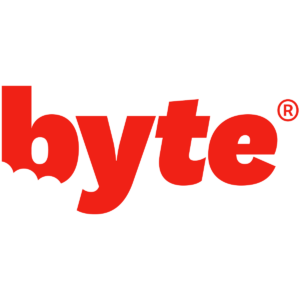Crowding happens when there is not enough space in your jaw for all of your teeth or when you have a severe case of misaligned teeth that become displaced.
When this happens, your teeth will push towards each other and may cause some overlapping and rotation. Crowded teeth can happen in both the upper and lower teeth.
If you have crowded teeth, then you will be glad to know that Invisalign can effectively treat the issue for you!
All you have to do is look for an Invisalign provider in your local area to assess your case and the Invisalign provider will be able to explain and show what Invisalign treatment can do for you.
How does Invisalign work for teeth crowding?
Invisalign’s dental technology is specially formulated for spacing problems and is found to work effectively for crowded teeth.
Invisalign works by pushing the teeth gradually into a proper alignment. As the teeth shift through time, they can create more space in the mouth.
The crowded teeth will eventually move back to their corrected positions in a few months and you will be walking out with a better and straighter smile when your treatment ends.
Take note that Invisalign may require you to use an additional orthodontic treatment if you have very severe crowded teeth.
Symptoms of crowded teeth
Here is a list of typical teeth crowding symptoms people go through. Some of these may range from mild to severe.
- Misaligned teeth
- Frequent biting of the inner cheeks or tongue
- Speech problems like lisp
- Discomfort while chewing or biting
- Difficulty breathing
- Facial appearance may be altered
What causes crowded teeth?
The major cause of teeth crowding is your genes. Crowded teeth are usually inherited from one generation to the next. If you have it, it is most likely that one of your parents, siblings, or relatives had it as well.
But some certain habits and conditions can alter the shape and structure of your jaw and this causes teeth crowding such as the following:
- Excessive thumb sucking or extended thumb sucking beyond 3 to 4 years old.
- Excessive use of feeding bottles during early childhood
- Early loss of baby teeth
- Trauma or injuries that can cause misalignment to the jaw
- Enlarged tonsils or allergies that cause difficulty breathing through the mouth or blockage in the airway
- Abnormally shaped teeth
- Gum diseases like gingivitis
- Ineffective dental care such as poorly fitted fillings, dental crowns, or braces
FAQs
Can Invisalign fix severe crowding?
There are cases when Invisalign was able to manage severely crowded teeth. In fact, it is easier to make aligners for crooked teeth than to fit metal brackets on crooked and overlapped teeth.
So, if you think your overcrowded teeth would be too much work for Invisalign, better check with an Invisalign provider first. You may be surprised to see that your issue can be managed with Invisalign.
How long does it take for Invisalign to fix crowding?
Once your Invisalign provider creates your impressions, you will have to wait for about a month for the lab to create your trays. Then you will be wearing one set for 2 weeks and move on to another set for another 2 weeks until your treatment plan is over.
The total number of aligner trays and the length of your treatment time will depend on the severity of your case. The more work your teeth needs, the more trays you will have to wear and the longer the treatment time will be.
Generally, the shortest treatment period time may be 2 to 3 months for mild cases. For complex ones, their Invisalign treatment may last for more than a year.
Who should use Invisalign treatment?
- People with dental issues like crowded teeth, gapped teeth, crossbite, and overbite.
- People who want to fix their orthodontic issues discretely or those who do not want the metal mouth look of traditional braces.
- People who do not want any food restrictions during the treatment.
Who cannot get Invisalign treatment?
Invisalign can fix a lot of orthodontic issues but it also has its limitations. Although a powerful product, some orthodontic issues are better fixed with traditional braces because metal provides more force.
Here is a list of some situations that Invisalign may not be able to correct.
Tooth shape
The tooth shape is unusual and will not allow the aligners to get a good grip. Round, pegged, short, or broken tooth won’t work with Invisalign.
Misaligned teeth
If the tooth position needs major rotation to align it correctly. Invisalign can only force a tooth to rotate up to 20 degrees. If it needs to rotate more than that, it is best to use braces.
Tooth gap
If the gap is too large to close between your teeth. Invisalign can only fix gaps up to 6 mm of space.
Extrusion and intrusion
If extrusion and intrusion are needed to straighten your teeth. Invisalign could not do intrusion and extrusion so you will be advised to go for metal braces.
Prior dental work
If you had previous dental work done such as dental bridges or dental implants, it would be difficult to use clear aligners to fix crowded teeth.
Oral health
Patients who plan to use clear aligners need to have good oral health. This means that there should be no cavities, gum disease, or other dental issues that could interfere with the treatment. Your Invisalign provider will make you address these issues first before you will be allowed to use the plastic aligners.
Conclusion
Although the majority of crowding cases is not really a serious medical concern, having crowded teeth will make it difficult for you to maintain good oral health. Having crooked teeth will increase your risk of tooth decay and cavities and may lead to more serious dental issues in the future.
Deciding to treat crowded teeth with Invisalign is a good and effective solution to your problem. The best thing about it is that Invisalign is not as intrusive as traditional metal braces. The removable aligners will not be lodged to your teeth permanently.
Invisalign fix also other issues like tooth gaps and overbite or crossbite. You get to fix crowded teeth and other issues at the same time! You will surely end up with a beautiful smile after treatment.
Invisalign is also covered by dental insurance and can be paid through financing. This makes Invisalign clear aligners a more affordable crowding treatment option for you!



